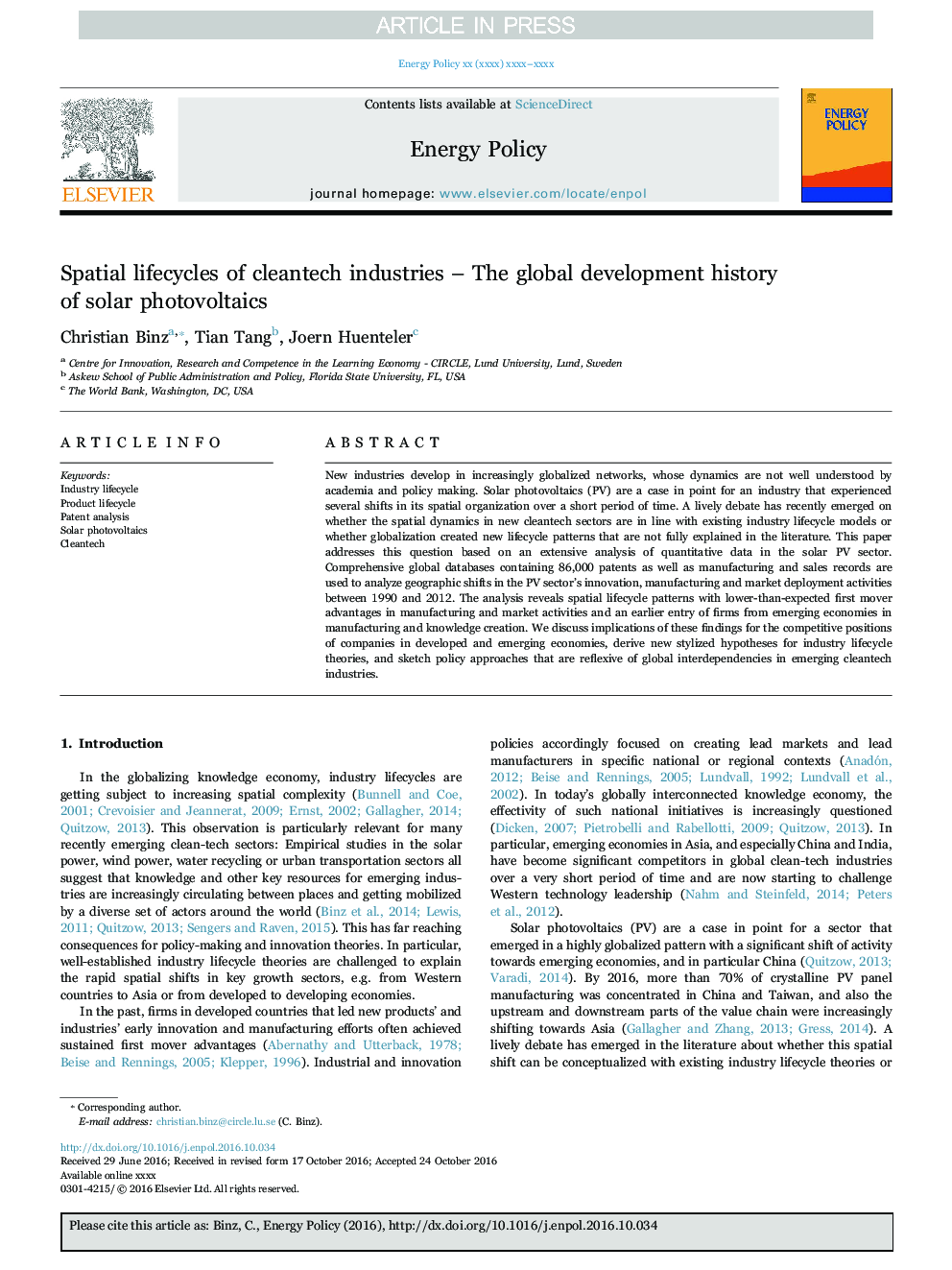| Article ID | Journal | Published Year | Pages | File Type |
|---|---|---|---|---|
| 5106008 | Energy Policy | 2017 | 17 Pages |
Abstract
New industries develop in increasingly globalized networks, whose dynamics are not well understood by academia and policy making. Solar photovoltaics (PV) are a case in point for an industry that experienced several shifts in its spatial organization over a short period of time. A lively debate has recently emerged on whether the spatial dynamics in new cleantech sectors are in line with existing industry lifecycle models or whether globalization created new lifecycle patterns that are not fully explained in the literature. This paper addresses this question based on an extensive analysis of quantitative data in the solar PV sector. Comprehensive global databases containing 86,000 patents as well as manufacturing and sales records are used to analyze geographic shifts in the PV sector's innovation, manufacturing and market deployment activities between 1990 and 2012. The analysis reveals spatial lifecycle patterns with lower-than-expected first mover advantages in manufacturing and market activities and an earlier entry of firms from emerging economies in manufacturing and knowledge creation. We discuss implications of these findings for the competitive positions of companies in developed and emerging economies, derive new stylized hypotheses for industry lifecycle theories, and sketch policy approaches that are reflexive of global interdependencies in emerging cleantech industries.
Related Topics
Physical Sciences and Engineering
Energy
Energy Engineering and Power Technology
Authors
Christian Binz, Tian Tang, Joern Huenteler,
